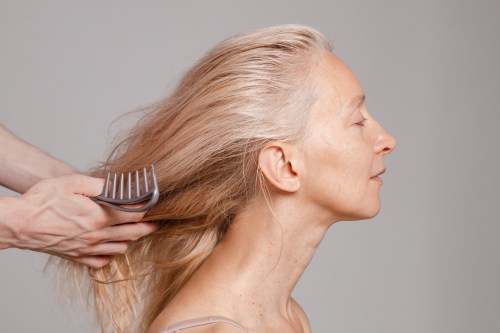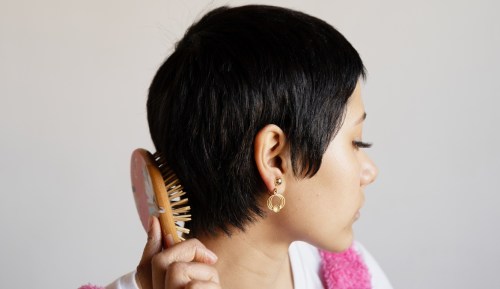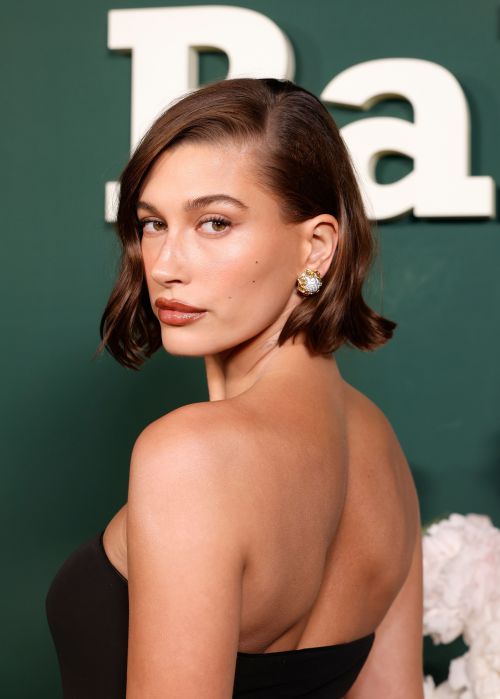Getting your hair cut can be a stressful process. It’s a way to totally change up your look in the course of a single hour, which in and of itself can be daunting. Add to that the fact that it’s irreversible, and that hair takes kind of a while to grow out, and, well, yikes. Frankly, I’m getting heart palpitations and a slight anxiety giggle just thinking/typing about it.
If you’ve ever walked out of a haircut and thought “what the heck did I just do?” well, same. Because it’s hard to make any sort of logical decision when someone is standing over you with a pair of scissors. And so, to make the experience slightly less overwhelming (… am I being dramatic, or do other people hate haircuts this much, too?!), I asked Dhiran Mistry, stylist at the David Mallett Salon in New York, what every person should know before going in for a haircut, regardless of what lengths they’re working with.
A few general rules that apply whether you’re short, long, or medium haired: Don’t show up late, drunk/hungover, or with wet hair. Seriously. And one more thing to tell your stylist before they get started? “I always like to know how often someone is washing and drying their hair to grasp an idea of how much damage is incurred in between haircuts, as this will determine how long a person can go in between cuts,” says Mistry. Here, he shares everything else you should know before sitting down for a chop.
Short hair: The cardinal rule for people with short hair? Come into your cut with your strands au natural (so, no blowdryer or straightening iron that morning) so that your stylist can get a true sense of how your hair tends to behave. “It’s important to know what the hair wants to do naturally, especially for a short cut, since it will be the most low maintenance haircut in terms of styling,” says Mistry. “Keeping the hairline soft and not cut too blunt will not only look better, but grow out better and avoid looking like an outgrown haircut.” You want your short haircut to be a “wash and go” situation, so let your stylist give you a style that makes that possible (and easy AF).
Medium hair: “Medium” hair is a blanket term that can mean a few different things to different people, which is why if you’re going in to get your long hair cut it’s critical to bring an inspiration photo with you. “Medium length might be a gateway for people going a lot shorter but not committing to the whole hog—like a stepping stone,” says Mistry. You’ll want to decide on a length that’s short enough so that it’s easy to air dry, but long enough that you can still potentially pull it into a ponytail—aka the best of both worlds. If you’re currently working with short hair that you’re trying to grow out, you’ll want to talk to a stylist about a medium cut that will grow out well so that you won’t need to come in for trims as frequently.
Long hair: If you, like me, dread the prospect of getting your long hair trimmed—trust me, I feel you. But long hair does not equal healthy hair, and you need to be realistic about getting cuts frequently enough in order to maintain both. “If your hair is long and hasn’t been cut in a while, then chances are there will be more damage and split ends to take care of,” says Mistry. “If it’s a matter of adding more movement and shape then be aware especially of the color, as cutting layers can expose darker colors underneath someone’s head and can also cut out highlights that sit on the top.” To make things interesting, Mistry suggests adding some face-framing pieces that will give your look some additional oomph—whether you’re wearing it down or in a post-gym pony.
Here are four signs you need a trim that have nothing to with split ends (seriously!). And here’s what to do if you really, truly hate your new haircut.
Sign Up for Our Daily Newsletter
Get all the latest in wellness, trends, food, fitness, beauty, and more delivered right to your inbox.
Got it, you've been added to our email list.











